Click on any topic below for more information.
At RC Strategies we are committed to the principles of equity, inclusion and diversity. We are committed to embracing the uniqueness of every individual and highlighting the strengths that differences provide. We will seek to support everyone to be involved in decisions which interest and impact them and to have access to desired community services to enjoy full, healthy lives.
RC Strategies takes environmental sustainability seriously. Through the work we do and the ways in which we go about doing it, we are advocates respecting our environment and in mitigating climate change wherever we can.
At RC Strategies we are committed to using data better to make more informed recreation and parks decisions. This is apparent in our work and through partnerships we have with like minded organizations like ActiveXchange Canada
This project involved an assessment and analysis of current gymnasium space; leading to the development of 10 year strategy that will guide investment, partnerships with the School District, and potential acquisition opportunities. RCS was also retained to simultaneously conduct an Arena Strategy with the same general scope of work.
This project was one of three Needs Assessments that the RCS team was retained to conduct for facility renewal projects in Burnaby (the Northeast Quadrant Community Space Needs Assessment specifically informed renewal of the Cameron Recreation Complex). The project included engagement with residents through a public survey and stakeholders through a series of workshop style meetings. A review of existing facility utilization, trends, and previous planning also informed the study. The Needs Assessment provided the City and design team with a high level identification of future space component and amenity needs and provided a basis for the development of a functional facility program.
The Strathcona County Recreation and Culture was developed with the influence of 34,000 community perspectives and thorough research and analysis. The Strategy is meant to provide direction for all members of the recreation and culture delivery system and sets a strategic course of action for volunteers, the non-profit and private sectors, other stakeholders and local government. The County also developed an Implementation Plan outlining how it plans to react to the broader community-wide Strategy over a 12+ year time frame.
This project involved developed a new Recreation Services Master Plan for a service area that includes Electoral Areas E, F, G, and H, the City of Parksville, and the Town of Qualicum Beach. The Master Plan process included engagement with residents, facility groups and other stakeholders, leading to the identification of opportunities to enhance service delivery and a handful of future infrastructure priorities. The Master Plan is intended to provide staff and elected officials with a point of reference to inform future decision making and resource allocations.
The Recreation Master Plan was developed to provide a comprehensive roadmap to guide future priorities and focus areas for the Greater Vernon Recreation Services, which is inclusive of the City of Vernon, District of Coldstream, the Regional District of North Okanagan Areas B and C. The project involved:

Working together through the regional Family and Community Support Services (FCSS), the Town of Rocky Mountain House, Village of Caroline, and Clearwater County wanted to better understand the social needs of area seniors. The assessment includes a demographic analysis (along with population projections) of the three municipalities in the region. High level municipal planning documents and strategies were examined as well for the three municipalities and an inventory of regional services was completed which identified programs available to seniors in the region. A key component of the Needs Assessment was the engagement program. This included a survey of seniors in the region to learn first-hand the circumstances in which they live and needs they have. Agencies serving the seniors in the region were also surveyed and community stakeholder meetings were convened. Based on all research completed a series of conclusions were drawn which was used by FCSS to make decisions on service delivery and to work with its community partners on collaborative approaches.
The Master Plan provides a point of reference for Town Council, Administration, and the FCSS Board as decisions are made and priorities set to address preventative social services. The recommendations are categorized into communication and awareness; partnerships and collaborations; internal priorities and focus areas; and delivery and resourcing approaches. These recommendations were developed based on a thorough program of research that included a review of a previous plan, and a broad array of engagement. Engagement tactics included the following: community conversation open house; stakeholder discussion sessions; youth survey; and a community wide survey. Associated costs and timing for all recommendations was presented as well.
This report provides detailed findings from a program of public consultation that included stakeholder discussion sessions, (11 sessions including 66 individuals), a public survey (n=3,043) and an online mapping tool that enabled residents to share their thoughts spatially (160 unique comments). The stakeholder discussion sessions included disparate perspectives including active recreation users, historical enthusiasts, environmental perspectives, educational institutions, and others. Through discussions and a final session with representatives from all groups, a common vision, values, principles for use, and management strategies were identified. The public survey invited all households in the city with the opportunity to provide their thoughts on the river valley including areas of concern, barriers to use, its importance, and priorities for management actions. While the survey was primarily fielded online, provisions were made for participation by hard copy questionnaire. This report will help guide the future planning process for the river valley.
The Battlefords Joint Park & Recreation Master Plan serves as a guide to planning for parks and recreation in the Battlefords. This plan provides detailed findings resulting from a comprehensive public engagement process that included a public survey, and consultation with specific stakeholder groups, including youth in the community. All households in the market area were sent a postcard that included information about the project as well as a unique access code (the access codes were unique to each household and served as a control mechanism limiting multiple responses). Approximately 300 households provided input (n=297). An invitation to provide input was extended to a broad list of community groups; twenty-eight (n=28) provided a response. These groups included indoor and outdoor sport organizations, recreation groups for youth through to adults, and arts and culture groups. Meetings were convened as well with approximately forty stakeholder groups that included school jurisdictions, social agencies, service clubs, tourism groups and so on. Multi-perspective discussion sessions were convened as well as individual interviews. Finally youth in the community were specifically consulted; team members visited three schools in the community and spoke with youth in informal conversations during school break times. All engagement findings served as integral input to the Master Plan.
Research for this report involved an extensive program of community engagement with a survey of households in the Strathmore area – including the Town and nearby Wheatland County (n=283 responses), a community group survey (n=35 responses) and stakeholder meetings and interviews (n=30 organizations). Stakeholders included a broad array from businesses, service clubs, sport and recreation groups, youth organizations, through to the Agricultural Society. The engagement provided insight into how recreational and cultural facilities are being used, and what community priorities are as it relates to facility investment. This report provides an overview of service delivery for recreation and cultural services, as well as an inventory of facilities and their usage. A summary of key findings provides recommendations for future planning and to guide the development of the Recreation, Culture & Facilities Master plan.
The City of North Vancouver Council’s Strategic Plan (2018-2022) has set a vision to be the “Healthiest Small City in the World” and lays the foundation for community recreation planning. “A Healthy City for All: The Role of Community Recreation” outlines a four-step decision-making tool to support the City as it contemplates future investment in new facilities for community recreation:
This tool is designed to be used as part of the City’s planning process for community recreation which includes ongoing data collection and feasibility studies. This plan does not include any specific recommendations for the enhancement or development of amenities.
To inform the development of the Mountain Bike Guidelines, the Capital Regional District Board established the Mountain Bike Advisory Committee (MBAC). MBAC brought together representatives from mountain biking organizations, outdoor recreation interests, the conservation and naturalist community, First Nations and the CRD Regional Parks Committee. Chaired by RC Strategies, the Committee prepared advice and guidance on a range of issues related to mountain biking in regional parks, such as what type of mountain bike experiences are most needed and most appropriate for these parks. Amongst the many issues examined by MBAC, the committee provided recommendations as to how mountain biking and mountain bike trails can be managed to avoid and minimize impacts to ecological, indigenous and cultural heritage values in regional parks.
The City of Kelowna developed the Special Event Volunteer Program to help organizers of special events with volunteer recruitment and training. The program includes an online marketplace where special event organizers can post their volunteer positions and connect with volunteers looking for opportunities. It will also offer training for volunteer coordinators or special event organizers in volunteer management and other skills needed to produce special events. As part of the implementation of the program staff support was recommended.
The Covid-19 pandemic impacted people’s use of trails as well as their perception of safety. The guidelines provided consistent operational and management practices that all trail operators should consider to minimize the risk of Covid-19 transmission and to help visitors feel safer while enjoying their trail experiences. The guidelines were developed by employing a multi-pronged approach:
The document presents guidelines to manage visitation. Included is a risk assessment tool which helps operators determine which management actions to implement. Management actions include both direct and indirect tools and further identify how each tool aligns with relative risks of Covid-19 transmission. Further, the document outlines procedures for cleaning and disinfecting amenities. Finally guidelines related to safe work practices are covered.
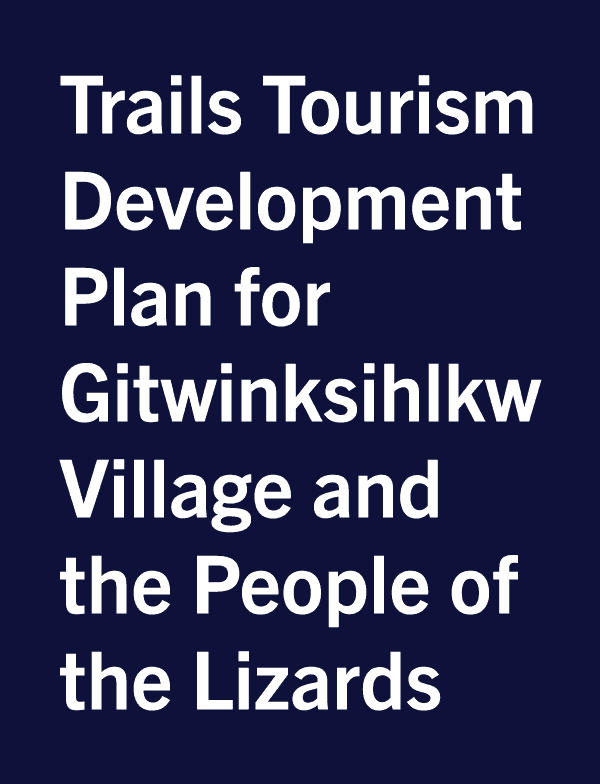
The plan presents an approach to developing the network of Indigenous signature trails. Through the development of the plan, the future of trails tourism was defined. This included designing trail experiences and supporting amenities that share the Village’s and Nation’s story; determining local services that could support the trails tourism; identifying management strategies; all within the context of community engagement, sustainability, and truth & reconciliation.
The plan included a trail network classification system, design guidelines, and necessary support amenities (including trail heads, parking, wayfinding signage, view points, and interpretative elements. Because of the significance of this initiative to the Village and the importance of providing a fulsome experience, recommendations were presented related to enhancements in the Village itself. Actions are prioritized and cost estimates are included.
The Kakwa Falls Trail in Kakwa Wildland Provincial Park, experiences considerable mixed use in the summer. Its primary purposes are to provide access to the Kakwa Falls in Kakwa Wildland Provincial Park and to provide access to other nearby trails within the Park. In the winter, the Trail is one busiest and most popular snowmobiling routes in northwest Alberta. The trail serves as the primary access to British Columbia’s Kakwa Provincial Park and its backcountry snowmobiling opportunities.
Though enjoyed as a year-round recreational trail for decades, the Kakwa Falls Trail is an old industrial road which was never intended, nor has it been redesigned, to support quality and sustainable motorized or non-motorized recreational trail experiences. Alberta Environment and Parks wanted to improve the sustainability and safety of the trail thereby improving the quality of the visitor experience.
The purpose of the Study was to identify trail upgrades and / or rerouting options to resolve sustainability problems; identify potential ecological, historic resource and land use concerns associated with each option; and prepare cost estimates for identified trail upgrades. This was completed after an inventory and assessment of the sustainability problems was undertaken along with engagement with stakeholders.
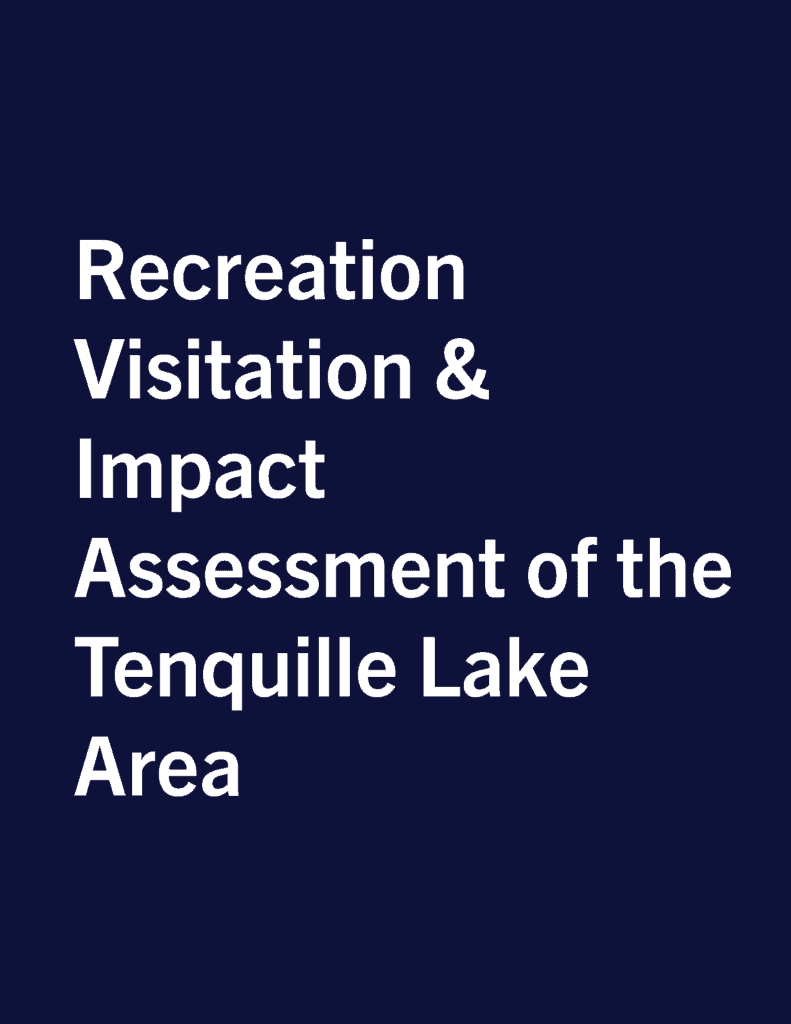
The Tenquille Lake area is a popular tourist and recreation destination. With its increase in popularity as a site for recreation, there is concern for how this growth in visitation is impacting the area’s natural environment.
This study examined current visitation patterns and recreation use of the Tenquille Lake area, and provides an inventory of recreation amenities and infrastructure such as trails and campsites in the area. It also examines the impact of recreation upon the Tenquille Lake – Owl Lakes Recreation Area (TOLRA) and provides recommendations for management issues that will need to be addressed by the visitor management plan. This study was the result of extensive consultation with visitors and stakeholders of the TOLRA.
This study will influence the Ministry of Forest, Lands, Natural Resource Operations and Rural Development (FLNFORD)’s visitor management planning process for the TOLRA. The focus of this study was limited geographically by trails leading to and the area immediately adjacent to Tenquille Lake.
Note: This document is not currently available publicly.
The Horseshoe Canyon plays a critical role in introducing and greeting visitors to the badlands. The Horseshoe Canyon Master Plan defines how the canyon will be developed, managed and marketed over the next 10 years. The plan was developed through consultation with residents, stakeholders and partners.
The plan outlines the visitor experiences that will be delivered in the canyon and the infrastructure and amenities that will need to be developed to facilitate those experiences. It also provides management strategies to ensure that visitation to the canyon minimizes any negative ecological impacts.
The plan makes recommendations that will help increase the direct and indirect economic contributions that tourism to the Canyon is making to the County and region. It will guide all capital, operational, management and marketing decisions regarding the canyon.
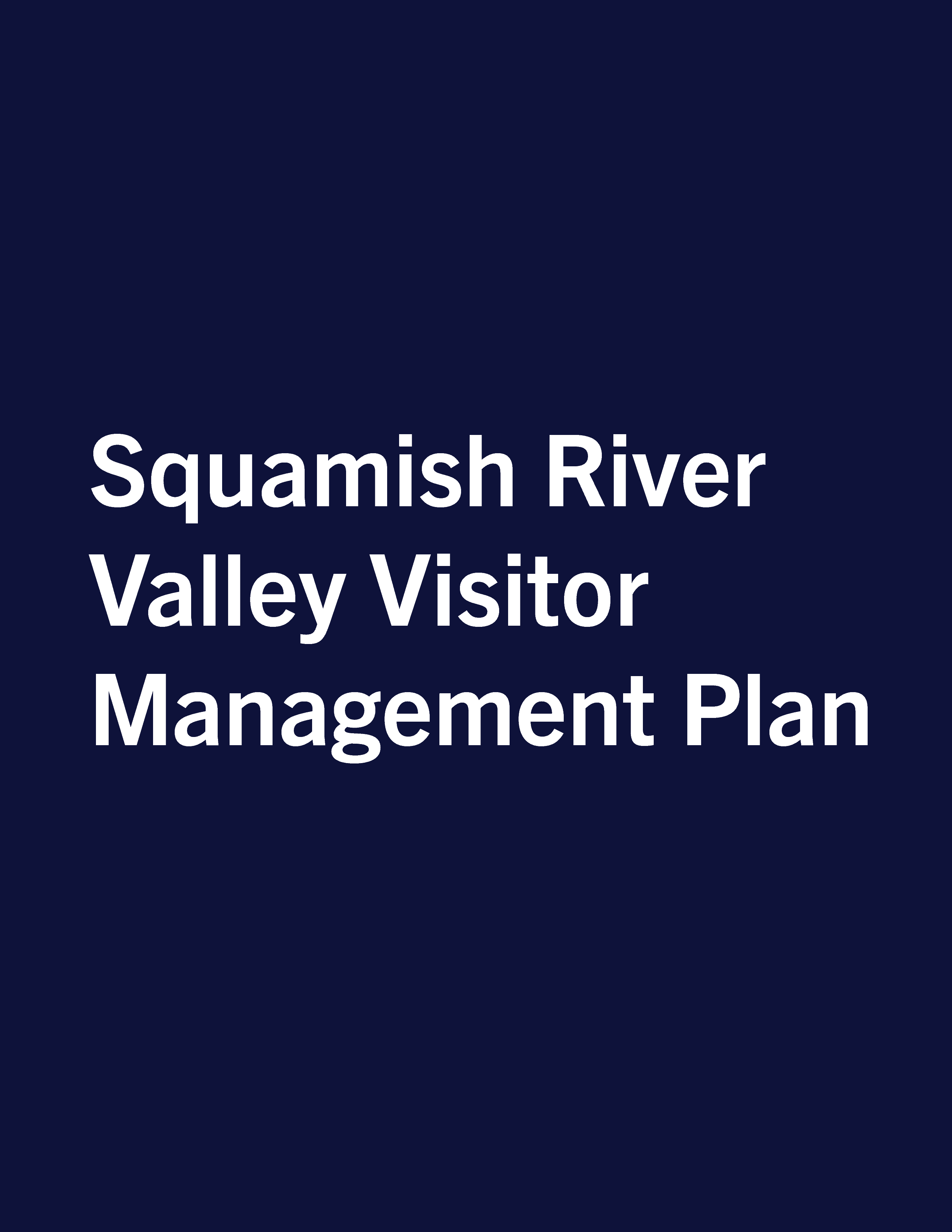
The increasing popularity of the Squamish River Valley as a recreation and tourist destination calls for a comprehensive plan to manage how the valley is used as a site for public recreation. The Squamish River Valley Visitor Management Plan was the result of extensive consultation with the Squamish First Nation, the Tsleil-Waututh First Nation, as well as residents, stakeholders and recreational users. The plan:
The plan outlines how to improve public recreation, through new investments in recreation management and infrastructure in the Valley, over the next 10 years.
Note: This document is not currently available publicly.
In an effort to better understand the social needs of residents in the Lac Ste. Anne County area, the County undertook the development of this Social Needs Assessment. In order to effectively support the community, it is imperative that the needs of the community are understood. This report presents the information gathered and research completed to gain an understanding of the community’s needs. Based on an analysis of this information conclusions are drawn that will be utilized by Lac Ste. Anne County as it makes decisions related to resource allocation in order to best address the identified needs.
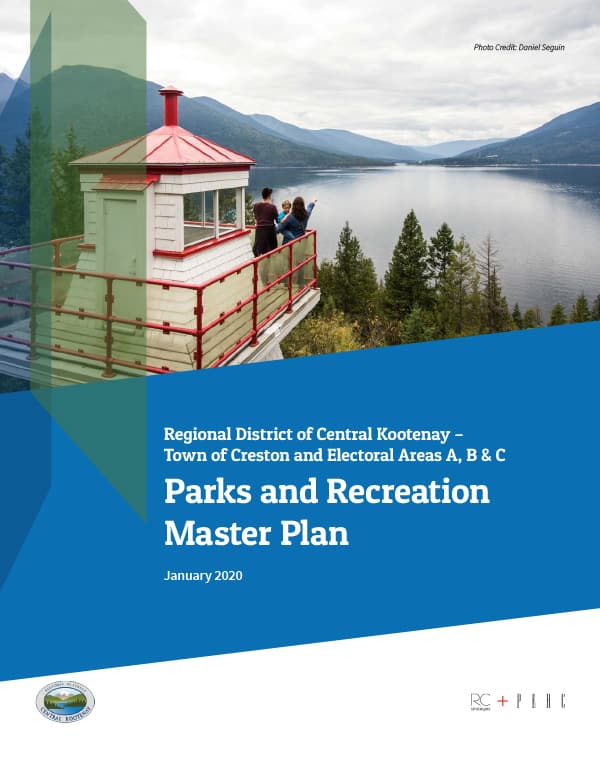
The Master Plan provides a long term sustainable strategy over the next ten to fifteen years. It has a solid foundation that includes the vision, mission, and guiding principles, outcomes and nineteen recommendations organized into three categories: programming & events, parks and recreation infrastructure, and service delivery. Community engagement was a significant input to the Master Plan. It included a mailout survey (n=1,255), a survey of community organizations delivery services (n=28), and a series of interviews and discussion sessions throughout the study area (n= 60 organizations).
The delivery of community programming through the Community Associations is a cost effective method of service delivery for the City. The City supports these important volunteer organizations in their delivery of recreational programs and community events and wants to ensure their sustainability. Recognizing the independence of the Community Associations, this strategy identifies approaches and a philosophical stance the City should adopt to support and strengthen this important delivery model.
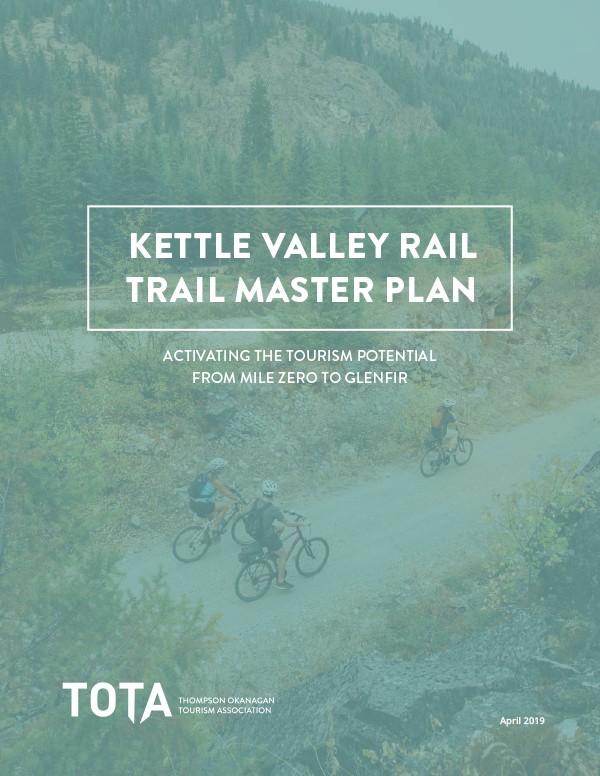
The master plan details the priorities and actions that should be implemented to:
This master plan establishes a renewed direction for the future of a segment of KVR Trail. As the owner and manager of the trail, the master plan has been recommended to the Minister of Forests, Lands, Natural Resource Operations and Rural Development (FLNRORD) for adoption and implementation.
This feasibility study recommends the development of an artificial turf sports field retrofit on the existing natural surface field at Ed Eggerer Athletic Park. Led by the Airdrie Field Turf Project Society in association with the City of Airdrie, this study involved extensive public and stakeholder consultation. This feasibility study outlines a market and site analysis, and identifies estimated capital and operating costs. It provides a series of recommended next steps which need to be undertaken prior to the actual development of the project.
The Keephills Community hub has operated out of a former school since 2018 and is jointly owned by the Keephills Community Association and Parkland County. Drawing upon extensive research and community consultation, this Business Case recommends that the County take over ownership of the property and operate it under the guidance of an advisory board. The Community Association would remain as a long-term tenant, ensuring the community’s ongoing involvement in operating the space. It also recommends that the use of the facility include (but not limited to) arts and culture, learning and library services and community events. The Business Case outlines an estimated operating budget and a long-term plan for capital investment for the hub.
This Business Case recommends the development of a new Langdon recreation centre which will be developed and co-located on the site of the new high school. It identifies opportunities for the recreation centre and high school to share facilities such as the fitness centre, gymnasium and youth centre, as well as other amenities. This Business Case outlines a conceptual floor plan and renderings for the new facility. It also provides estimates for the capital and operating costs, for developing and running the new facility as a non-profit corporation. This Business Case demonstrates the facility is needed to accommodate Langdon’s current population (with its high proportion of youth and children compared to the provincial average), and also accounts for the expected growth of Langdon’s seniors population as demographics shift in the future.
This Plan resulted in a recommended course of action for the development of a new aquatic centre. Led by the Aquatic Centre Advisory Committee (ACAC), the recommendation was based on a program of research including comprehensive community engagement. The report has been structured to walk through the steps taken in the Pre-Design process including a preliminary facility program and preliminary concepts. These concepts were vetted with the public and ultimately the ACAC’s recommended facility is presented along with estimated capital and operating costs.
The “Approach to Community Recreation Facility Planning in Edmonton” is the result of an evidence-based planning process that included extensive public consultation as well as a thorough review and analysis on past planning documents. This plan provides recommendations for strategic investment (both capital and operational) in new and existing community recreation facilities. It outlines what capital investment is needed to develop new facilities, while enhancing existing facilities. This plan also provides a framework for “amenity prioritization” for all indoor and outdoor facilities. It recognizes the need for recreation facilities to be fully accessible: eliminating all physical, social, geographic and financial barriers, so that all people in the Edmonton can fully participate in the City’s recreation programs.
The Recreation Master Plan was developed through extensive community engagement in addition to a broad program of other research efforts. This Plan provides strategies for service delivery, with an emphasis upon removing barriers to participation due to affordability issues. It identifies three infrastructure principles for guiding the development of future planning and the provision of recreation facilities and spaces:
This plan also sets priorities for capital investment into existing and new infrastructure.
The “Recreation Master Plan” was developed through extensive public consultation. It includes a series of recommendations for investing in infrastructure, with an emphasis upon improving the City’s existing facilities. This Plan also provides recommendations for service delivery. It recommends addressing issues of inclusion and access to ensure that all residents of Regina can fully participate in the City’s recreation programs and facilities.
The City of Prince Albert Community Services Master Plan was developed with input from representatives from the community including volunteer groups and community services stakeholders. This plan provides recommendations for strategic directions in key areas including service delivery, promotions, the role of community groups and community clubs, planning, infrastructure, and financial services. It recommends maintaining the City’s prominent role in the delivery of community services, while recognizing the crucial role that community organizations play, This Plan also provides recommendations for improving indoor and outdoor infrastructure, and identifies arena sports facilities and multi-use trails as top priorities for investment as part of a comprehensive framework for facility prioritization.
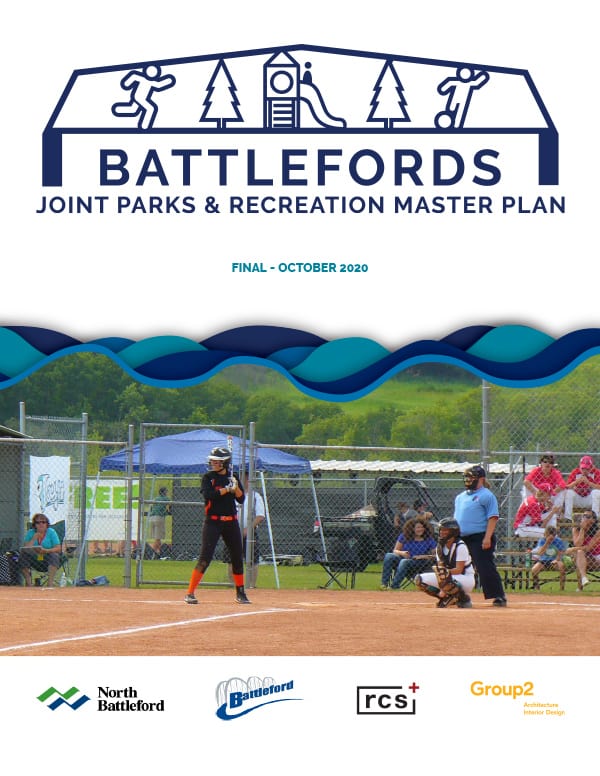
The Battlefords Joint Parks and Recreation Master Plan has been developed based on a variety of influences and information gathered such as community demographics, resident and community group input and demand, and broad parks and recreation research and experience. This Plan provides strategic recommendations about enhancing and guiding the future state of parks and recreation facilities, spaces, and services. It outlines key directions for the municipalities to take with regard to recreation spending. More importantly, it suggests ways that the City and the Town can work together to optimize resources and enhance the value of recreation in the entire region.
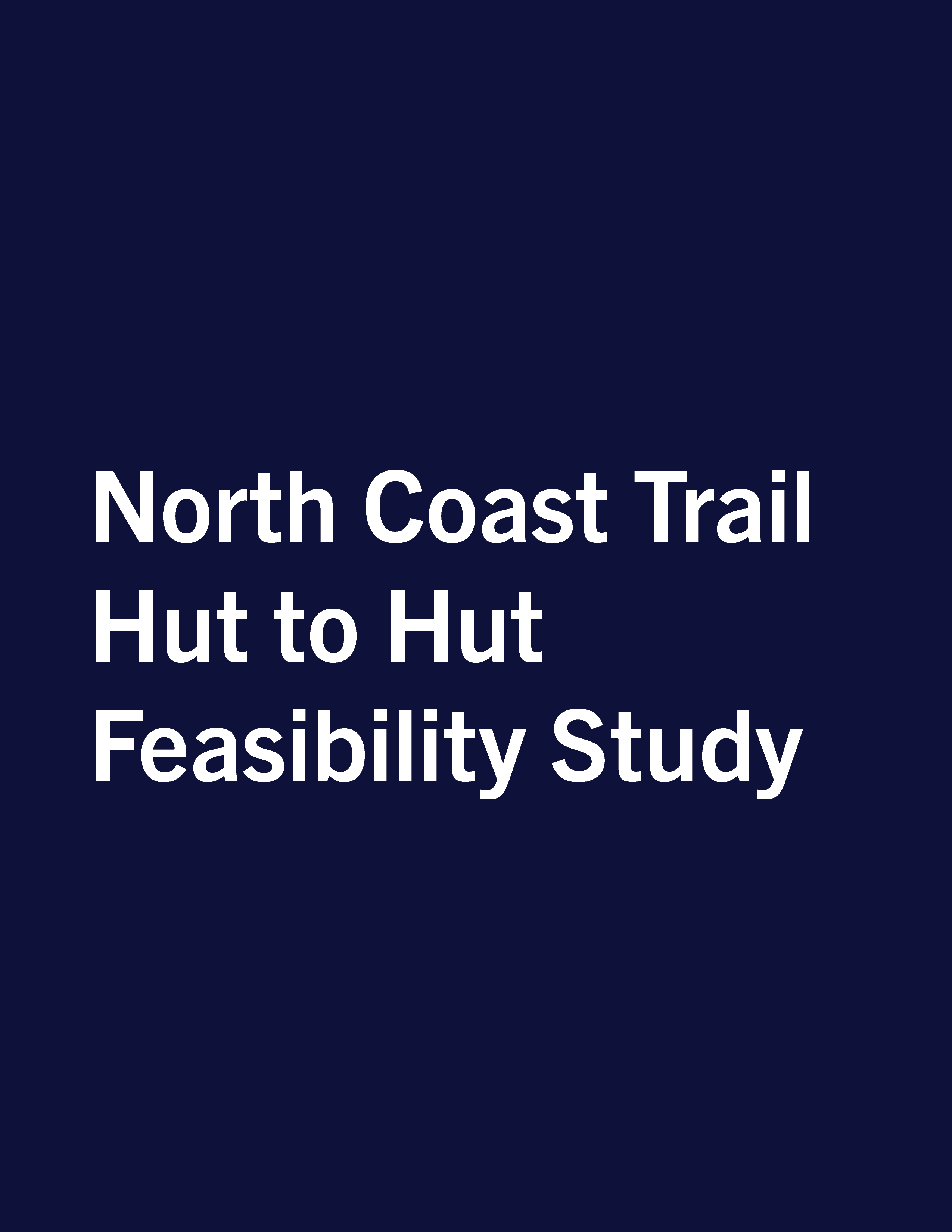
This study outlines the feasibility of developing a network of comfort camping accommodations along the 43.1 km North Trail. It includes detailed recommendations which address:
This study recommends implementing the network of comfort camping sites, and provides a detailed financial analysis including sales projections for the potential sites.
Note: This document is not currently available publicly.
RT09’s Product Development Strategy identifies priorities for tourism product development for the South Eastern Ontario region. There are four main goals of the strategy:
This strategy provides a series of implementation steps to realize these goals which are designed to increase tourism in South Eastern Ontario.
Note: This document is not currently available publicly.
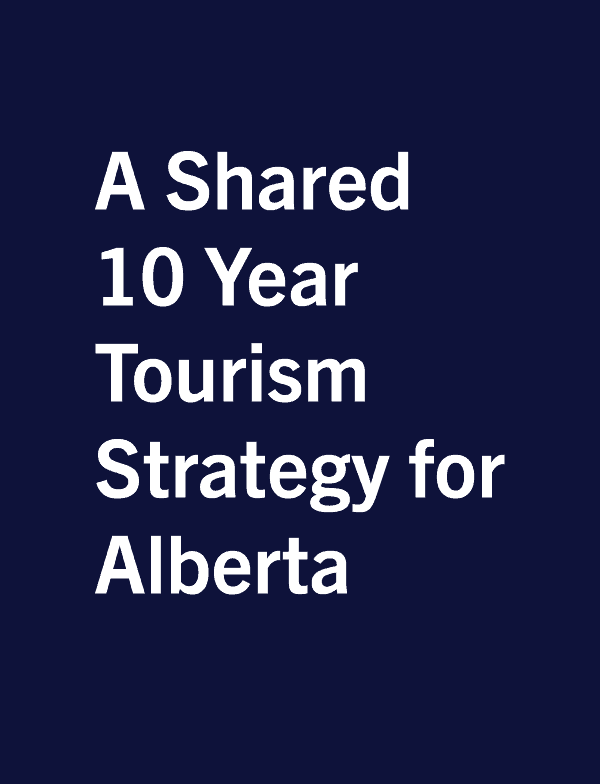
The Government of Alberta set a goal to double tourism revenue to $20 billion by 2030. This tourism strategy identifies initiatives to encourage more private sector investment in tourism, create jobs and contribute to the economic growth in the province. This strategy brings together all levels of government, community, indigenous partners and the travel industry towards the common goal of building Alberta’s tourism industry over the next ten years.
Note: This document is not currently available publicly.
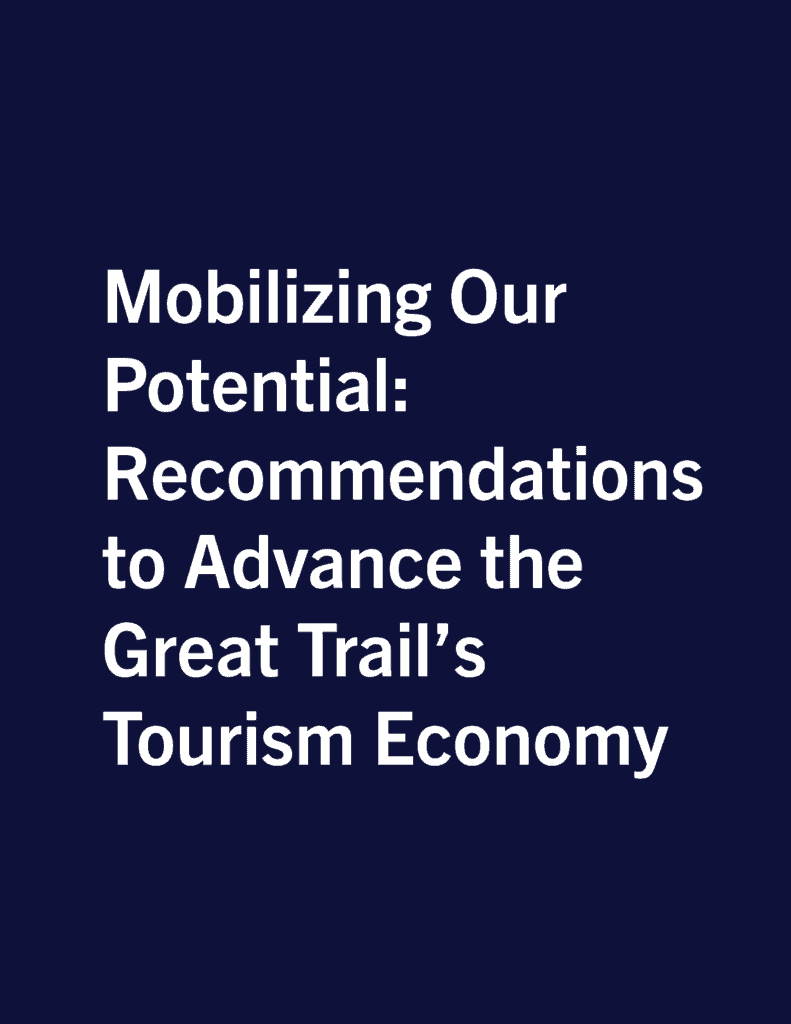
Efforts are needed to increase the Trail’s tourism readiness, its ability to motivate travel, and its trails tourism market share. The purpose of the project is focused on developing clear and tangible recommendations on:
The recommendations provided in the report are used by the TCT in the development of a Tourism Strategy.
Note: This document is not currently available publicly.
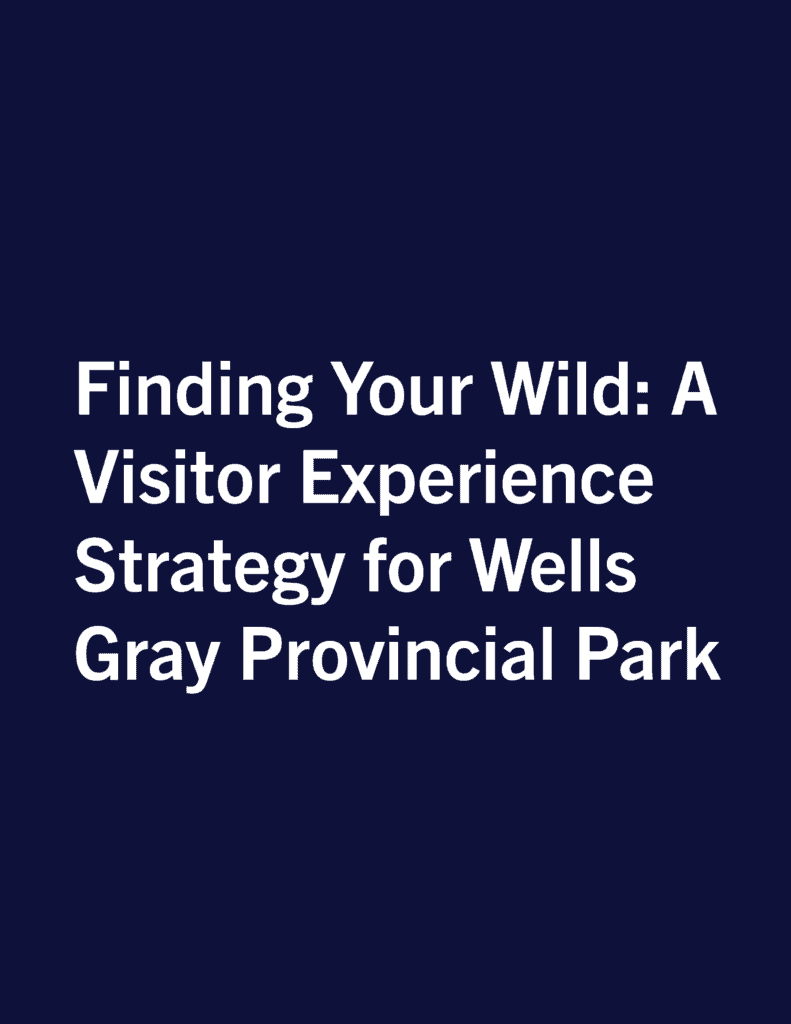
This strategy is an invitation to visitors to connect with the wild of Wells Gray and to our partners to help make those memorable visitor experiences possible. The strategy lays out the approaches and priorities that, as resources and capacity are available, BC Parks will strive to take, or enable our partners to take, to support visitors on their journey to finding their wild. Focused on the next 10 years, the specific purpose of this strategy is to:
The strategy will guide BC Parks’ capital and operational decisions regarding visitor experiences, associated infrastructure, visitor management and park use permitting and partnerships over the next 10 years.
Note: This document is not currently available publicly.
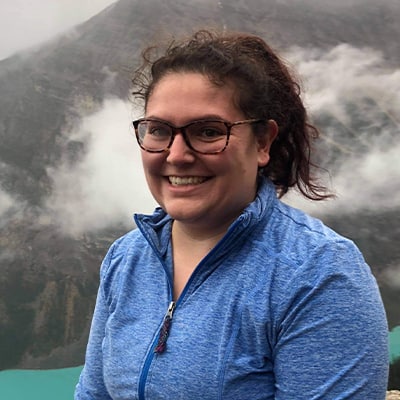
Danielle has always had a passion for creativity and design. She graduated from the MacEwan Design Studies Program in 2016 and has over 5 years of experience in both print and digital formats. Danielle has been with RC Strategies since mid 2018 and during this time has worked on dozens of projects. Her work has helped communicate the firm’s messages to thousands of people.
Devon graduated with his bachelor’s in technology specializing in GIS (Geographic Information Systems) and now has 10 years of consulting experience. He started his career in oil and gas, geomatics and environmental services but the latter half his focus has been urban planning and parks and recreation. Devon has completed over 50 projects related to community development and recreation where he has conducted data collection and management, data geoprocessing and modelling, remote sensing and imagery analysis and 2D/3D mapping. Devon enjoys new and complex technical/spatial problems each project brings and is persistently looking to enhance cartographic standards.
Meaghan has formal training in recreation and a background in municipal government most recently in program coordination and operations. She graduated from Brock University with a Bachelors of Recreation and Leisure. Meaghan’s background in municipal recreation allows her to analyze and thoroughly understand data from clients in order to help them understand their strengths and weaknesses. Meaghan loves to be an active member with sports associations in her community.
Clara-Jane Blye has worked with RC Strategies for the past four years while also completing her PhD at the University of Alberta, in the Faculty of Kinesiology, Sport, and Recreation. She studies environmental psychology and focuses on Leave No Trace behaviours, nature relatedness, and connecting new and diverse populations to Canadian parks. Not only is she passionate about her work in the recreation and parks industry, she also believes strongly in giving back to her community. CJ sat on the board of directors for the Alberta Recreation and Parks Association for the past three years and is currently on the board of Free Play For Kids. She is an avid trail runner, backcountry hiker, and equestrian who brings a wealth of experience and knowledge to every project.
For more than 25 years, Ron has been helping organizations in the public and not for profit sectors to generate useful data and create actionable insights to address key business opportunities and challenges. He has held several leadership roles in government, most recently leading a research and analytics team supporting recreation and community planning at the City of Calgary. Ron has extensive knowledge and experience in research design, data collection, data development and quality assurance, data analysis, and knowledge translation – connecting research to practice. He has conducted a wide range of innovative projects within the recreation sector to help inform decisions about service offerings, marketing and branding, service delivery, operational and administrative policy, as well as capital investments. Ron is a graduate of the University of Calgary and holds a Master of Arts degree in Sociology.
Fiona has a passion for developing community through recreation. She has worked with governments at a provincial and municipal level, Fiona has nearly 10 years’ experience in the delivery of recreation programs giving her insight into a variety of service delivery models. Fiona holds a Bachelor of Physical Education from the University of Alberta, with a concentration in Cultural and Managerial Studies of Sport and Leisure. She has stayed involved with the Kinesiology Sport and Recreation Alumni Association since graduating in 2013 by attending events and serving on the Board of the Association for 6 years. Recently, Fiona completed a Sustainable Agriculture Farm Practicum at UBC and intends on using her newly developed gardening skills to contribute to her local Community Garden. Fiona also enjoys hiking, running, and skiing. She is looking forward to hopefully hiking the West Coast Trail this summer.
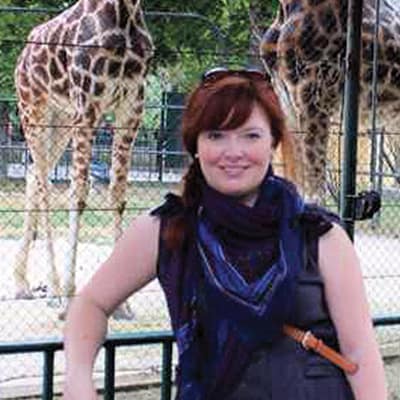
Meaghan has considerable experience examining and analyzing complex issues facing the leisure and tourism industries; particularly relating to issues of communication management, strategic planning and policy development. Professionally, she has worked in the academic, private and public sectors and brings this breadth of knowledge and insight to all projects she is a part of. Meaghan has published several articles in peer reviewed academic journals, contributed chapters to edited book collections and authored policy papers. Additionally, Meaghan has presented her policy and management work at national and international conferences and participated in invited lecture series, including the recent 2020 Atlantic Recreation and Facilities Conference Webinar Series.
Originally from Cape Breton, Nova Scotia, Meaghan brings a passion for working with small communities and a desire to create quality recreation experiences and opportunities for all that contribute to healthy, sustainable communities.
Since 1975, Brian has personally worked in more than 500 communities in Canada on over 1,500 consulting projects. Born and raised in Winnipeg, Manitoba, Brian obtained a Bachelor of Physical Education degree from the University of Manitoba and a Master of Science degree in Recreation Management from Loughborough University before working as a consultant with Loughborough Recreation Planning Consultants Ltd. in England. He then returned to Canada to work for the Department of Tourism, Recreation, and Cultural Affairs in Manitoba as Recreation Facilities Consultant and then as Regional Recreation Consultant before establishing PERC.
Justin is an avid outdoor enthusiast and a passionate award-winning outdoor recreation, parks, trails and tourism planner with more than 15 years of experience. Holding a Master of Environmental Studies and an undergraduate honors Degree in Recreation Management, Justin is a recognized sector leader who is focused on helping local, regional, and provincial governments, destination marketing organizations and not-for-profit associations create exceptional recreation experiences while growing the benefits from and improving the management of outdoor recreation, parks, trails, and tourism destinations. A consultant for the past 9 years, Justin has worked as Alberta’s Provincial Outdoor Recreation Specialist, Manager of Regional Planning for Alberta Tourism, Parks & Recreation, and a Conservation Officer. Justin received the Society of Outdoor Recreation Professional’s award for excellence in outdoor recreation planning in 2011 and 2019.
Steve has been with RC Strategies for over ten years after starting his career working in professional sports and the not for profit sector. He has a Bachelor of Arts in Recreation, Sport, and Tourism from the University of Alberta and a Diploma in Sports Administration from Mount Royal University. Steve is also IAP2 trained and in the final stages of completing his MA in Community Development from the University of Victoria. Steve is a current board member with the Recreation Foundation of British Columbia and the past chair of the Recreation for Life Foundation. Steve is an avid swimmer, hiker, golfer, urban explorer and still enjoys coasting around the rink with his “beer league” hockey team. Steve is from Cold Lake, AB and lives in Surrey, BC.
Rob has been helping communities and organizations answer questions for over 20 years. His professional experience is broad having worked with municipalities from a staff and client perspective on a breadth of issues related to the provision of community services. As a Certified Management Consultant (CMC), he combines his experience as an educator with his business skills (MBA from the University of Alberta) to address the issues at hand. Rob has augmented his professional experience in community and stakeholder engagement with training from the International Association of Public Participation (IAP2). He is adept at working with clients and community stakeholders and is comfortable making adjustments in response to changing circumstances. Rob lives in Sherwood Park, Alberta; he is at best an average golfer.
Mike has been consulting for 19 years and has spent his entire professional career with RC Strategies. He has an MBA from the University of Alberta specializing in Leisure and Sport Management and has held numerous leadership positions in the recreation and parks sector over the past 20 years. Mike is a past President of the Alberta Recreation and Parks Association and is currently the President of the Canadian Parks and Recreation Association. Mike has an active and “maturing” family with school aged children and lives in Sherwood Park, Alberta.